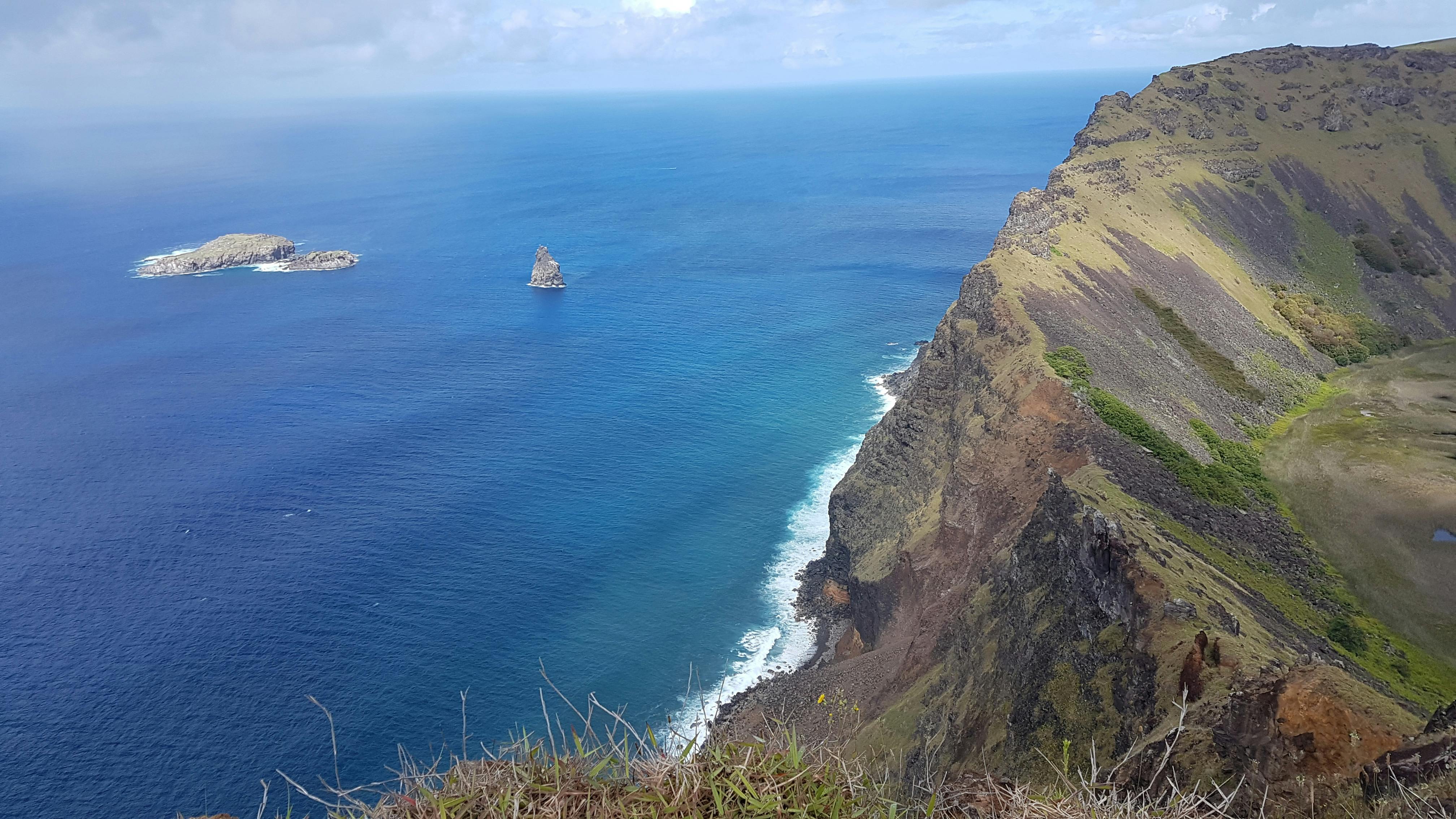Easter Island (Rapa Nui)—Rano Raraku

Rapa Nui (or Easter Island), located 3,700 kilometers off the coast of South America, is home to an extraordinary archaeological heritage that spans over a thousand years.
Site History
The archaeological sites of Rapa Nui (also known as Easter Island) are protected within Rapa Nui National Park, an open-air museum that has been a UNESCO World Heritage site since 1995. One important site is Rano Raraku, a volcanic crater located in the southeastern coast of the island. Between the twelfth and fifteenth centuries, Rano Raraku was the main quarry for the massive monolithic sculptures, known as moai, created by the Rapa Nui people. The moai, measuring up to 10 meters (33 feet) high, were carved directly into the volcanic stone, then detached and transported to be erected along the coastline. Close to 900 moai were carved in Rano Raraku; 396 still remain at the site in various stages of work.

Our Involvement
From 2004 to 2006, WMF partnered with Corporación Nacional Forestal de Chile (CONAF) to redevelop the visitor circulation system within the Rano Raraku quarry site in order to better serve the visiting public while protecting the fragile archaeological resources. The initial work consisted of reviewing a redevelopment proposal prepared by CONAF and the community. This was followed by the construction of a new interpretive trail that included improvements to existing trail sections and the implementation of landscape rehabilitation and visitor safety measures. After a test period, additional protective measures and the refinement of technical and logistical strategies were carried out. The completed trail system provides better pedestrian circulation, and for most of its length, it is wheelchair accessible. In addition, it allows for a more effective interpretation and protection of the cultural landscape. Planning, design, and construction supervision were carried out by specialized landscape architects from Public Works and Government Services Canada (PWGSC). Construction was undertaken by members of the local community.

Why It Matters
Rano Raraku is one of the most important sites on Rapa Nui. The hundreds of iconic moai scattered throughout the site are remnants of an ancient culture that collapsed by the end of the seventeenth century though a succession of catastrophes. After years of archaeological studies in the island, the extraordinary monolithic statues remain an alluring sight for visitors. The rapid and progressive increase in tourism in this once remote island has prompted the need for better tourism management and protective measures that will ensure the safekeeping of its archaeological marvels.

News & Updates
Death of a Moai
Easter Island: The Heritage and Its Conservation
Isla de Pascua: El Patrimonio y su Conservación
Related Projects

Easter Island (Rapa Nui)—Orongo
Rapa Nui (Easter Island), a special territory of Chile that was annexed in 1888, is most famous for the hundreds of moai statues scattered throughout its coastline.

Easter Island (Rapa Nui)—Moai Conservation Project
The Polynesian volcanic island of Rapa Nui (also known as Easter Island) is home to extraordinary sculptural marvels.
Our Supporters
World Monuments Fund's work at Rapa Nui has been made possible, in part, by support from The Robert W. Wilson Charitable Trust, American Express, The Estate of Ruth B. Somerville, The Selz Foundation, The Ralph E. Ogden Foundation, and WMF's Easter Island Committee.




